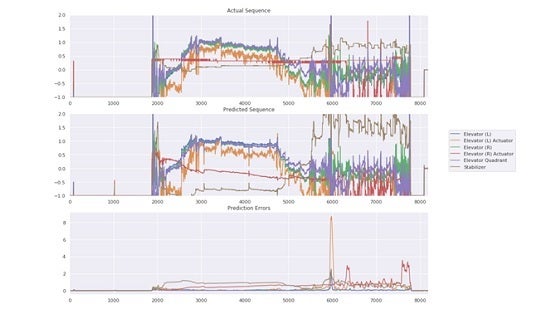How Data Science is creating safer skies through flight data monitoring and anomaly detection
In Data Science, we call deviations from expected behaviour “anomalies”, and they can be extremely challenging to detect on a large scale. It is made even more complicated when an anomaly occurs in a very short time frame or evolves over the course of multiple flights.
The L3Harris Commercial Aviation Solutions mission is “Creating Safer Skies”; our assignment was to develop an advanced tool, powered by machine learning, that will make the issue of identifying anomalies easier to approach. Our algorithm can learn the typical behaviour of aircraft using a dataset of thousands of flights. Using this model of aircraft behaviour, we can then predict what an aircraft is likely to do next — over the next few seconds or minutes. When we see an aircraft behaving significantly differently to our prediction, we then recognise that situation as an “anomaly”.
As this technology learns the inter-relationship between aircraft systems, this technology does not require domain knowledge to set thresholds for known issues and thus can be used to identify anomalies and predict failures not previously known to be an issue. We can also determine which parameters are behaving strangely to give an investigator or engineer a head-start in knowing which subsystem to investigate. This can save significant time in diagnosing a faulty component in the aircraft, and in many cases, performing the repair before a critical failure occurs.
We have identified many applications for this technology, including detecting unusual pilot behaviour upon take-off and landing, improper aircraft configuration, and localising mechanical faults inside the jet engine.

